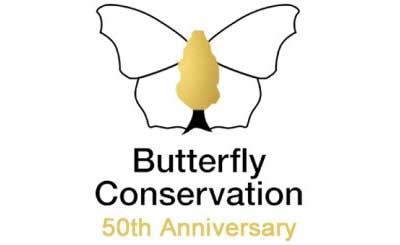Fritillaries for the Future – Project Update: Restructuring Rewell Wood
Sunday 25 February 2017
The Norfolk Estate at Arundel has long been an enthusiastic supporter of wildlife conservation, doing great things for butterflies, moths, farmland birds and raptors. Unsurprisingly, this support has extended to the co-ordination and execution of a huge amount of work to assist the Fritillaries for the Future project, and granting permission for others to do the same.
The winter of 17/18 has seen more such work performed than ever before, with co-ordinated efforts by the estate, commercial contractor, South Downs National Park Authority (and Volunteer Ranger Service), two groups from Plumpton College, Kenny the resident woodsman, and Butterfly Conservation. Everyone’s efforts are greatly appreciated, as is the wider support for the project by the Heritage Lottery Fund, Ernest Kleinwort Charitable Trust and individual donors.
Examples
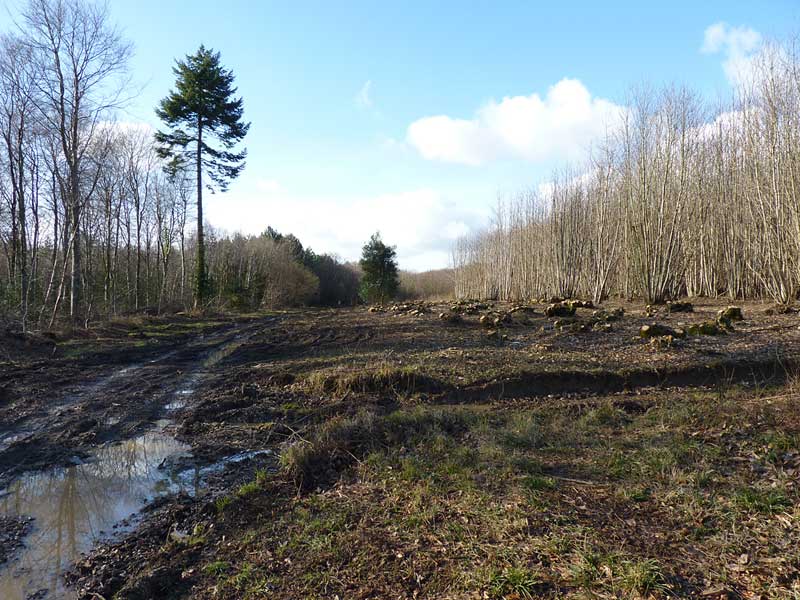
Key west-east ride at the southern end of the wood
A section of the key west-east ride at the southern end of the wood, where scallops cut by volunteers have provided a vital refuge for the Pearl-bordered Fritillary during a period in which the total population has been relatively low. This part of the ride has been a shady ‘pinch-point’ for many years, but two rows of tall Beech have been removed from its southern margin, and a wide strip of semi-mature Sweet Chestnut has been coppiced along its northern edge. Small blocks of this coppice will in future be managed on a rotational basis by volunteers.
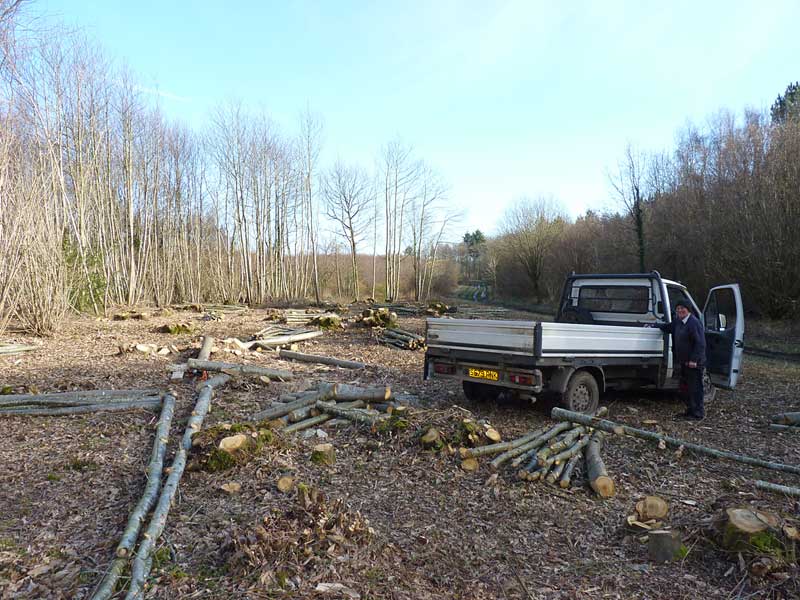
Harvesting Sweet Chestnut at the western end of the west-east ride
Resident woodsman, Kenny, at work, harvesting Sweet Chestnut at the western end of the west-east ride, beyond the point where volunteers have worked to date. Again, this will produce additional habitat that can be rotationally managed by volunteers in the future. The same ride is being widened at its eastern end by Plumpton College. A year from now a 1km stretch will be in excellent condition for the Pearl-bordered Fritillary.
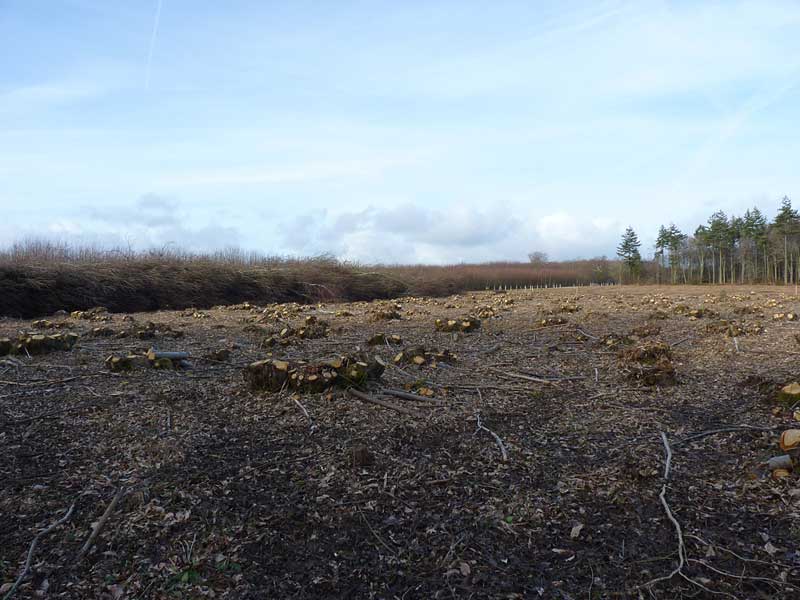
Newly cut commercial coppice coupe
An image of a newly cut commercial coppice coupe. In recent times the brash and a substantial quantity of wood have been left on the ground following a commercial harvest. Despite this being ‘windrowed’ (stacked in lines), the procedure inevitably reduces the extent and quality of fritillary breeding habitat. This year the brash has been cleared and stacked along the adjacent ride-side, where it will be chipped and extracted for biomass. It is hoped that this process will prove to be economically viable; if so, I suspect that future coppice coupes will yield significantly higher numbers of butterflies.
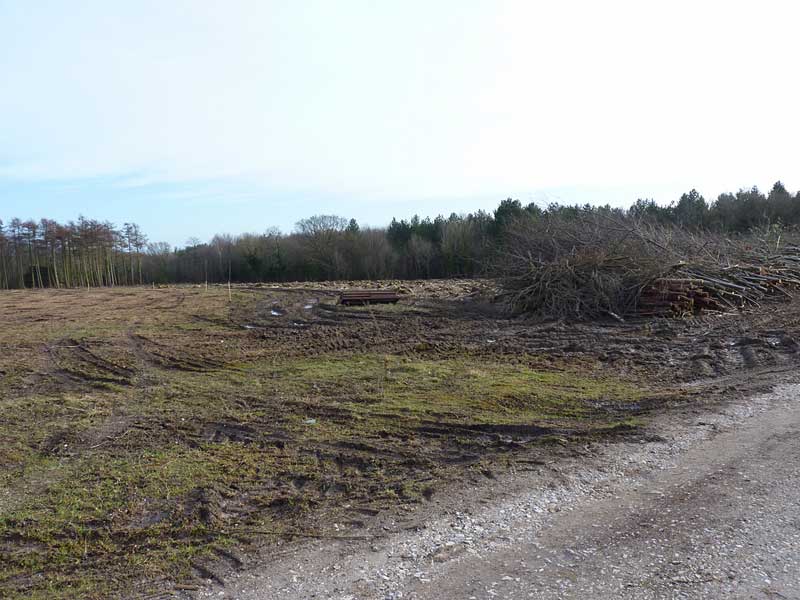
Sweet Chestnut coupe and brash pile
The same Sweet Chestnut coupe and brash pile from another angle (to right of frame). To the left is the lower part of a very large area which has been open for many years. This is shortly to be replanted with a conifer crop, which will itself provide good Pearl-bordered Fritillary breeding habitat for a few years. The posts which can be seen in the distance mark out ‘no replant’ zones, so as to leave a system of rides and glades once the crop has started to mature.
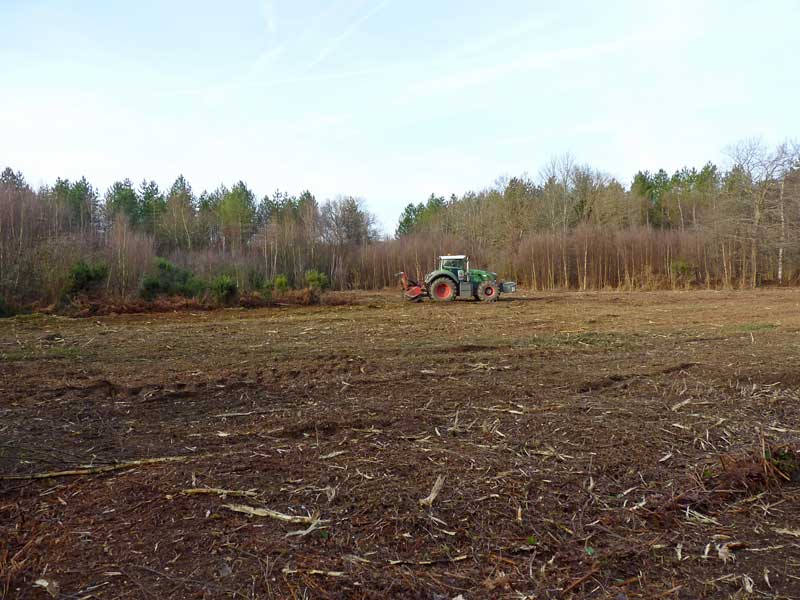
Last years clearance
During my last visit I returned to the large area (1.25ha) which was cleared of birch and scrub last winter, jointly funded by the South Downs National Park Authority and BC Sussex Branch. This is developing nicely and a corridor connecting the clearing to the main west-east ride is currently being widened during felling courses run by Plumpton College.
With all this work going on I’m confident that Pearl-bordered Fritillary numbers will fully recover by 2019, to match and hopefully exceed historic levels.
Neil Hulme
Fritillaries for the Future Project Officer



